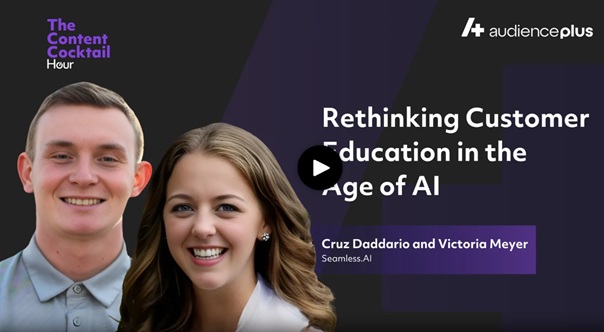Vincent Van Gogh is one of the most iconic painters of all time. His work is displayed at prestigious museums like the Metropolitan Museum of Art. His self-portrait sold for over $70 million in 1990, but did you know he only sold one painting in his lifetime?
Some would say this was because the world wasn’t ready for Van Gogh’s creative vision. But if you ask a marketer or a salesperson, they’d tell you Van Gogh just didn’t tap into his target market.
Knowing who your target audience is and where to connect with them for sales is crucial if you work in the art world, and this is especially true for graphic designers.
With demand expected to grow by only 3% over the next seven years, over half a million graphic designers are currently employed globally, and roughly 90% are freelancers (Colorlib).
How do you find your next job if you’re a freelance graphic designer? Do you go without work for months at a time? If you work for a studio or a graphic design agency, where does your company go to secure their next contract? Have you been trying to sign contracts with marketing teams at enterprise companies but had no luck?
This article will answer all your questions about finding graphic design work if you’re a designer. And if you’re looking for talented artists to bring your vision to life, we have prospecting tips and tools to share so you can sign with the best agencies.
Don’t let your designs go to waste! The world needs to see your creative genius. Keep reading to learn more.
Best Ways to Prospect Graphic Design Agencies
1. LinkedIn
Unlike other social networks, LinkeIn is uniquely tailored for businesses. Graphic and web design companies often showcase their portfolios and client work on LinkedIn. One pro option is to use the Seamless.AI Chrome extension to find emails and direct dials directly from company and individual contributor profiles. You can also do keyword searches for companies with target words like "graphic design," "web development," or "branding."
Additionally:
- Join LinkedIn graphic design communities: Network, get your company’s name out there, and possibly get referrals. Also, check out online communities like Reddit Graphic Design Community, Dribbble, UX Mastery, and Behance. These communities provide a platform to show off your work and get your creative juices flowing for your next project.
- Reach out to design agencies: DM decision-makers and share your work. Visit the company’s social pages and comment and engage on their posts. Do what you can to hook them on social media and get on their radar.
- Use the Seamless.AI Chrome extension: Use the Chrome extension to identify the right design companies on LinkedIn Sales Navigator. You can filter design companies based on industry, role, and other key parameters to get in front of the right people.
2. Content Marketing & Educational Resources
If you’re looking to get the attention of agencies, build up your online presence as a thought leader. Don’t just focus on your portfolio. Make sure you have something to say as well.
Create educational content such as blogs, webinars, or whitepapers that comment on the state of the graphic design industry. What pain points are common with designers at your experience level? What hacks have you come up with to resolve those issues?
Turn this content into lead magnets and ask for contact information in exchange for access. This will help position you as a thought leader in graphic design, attract prospects actively looking for solutions, and give you a way to connect.
3. Email Outreach Campaigns
After you gather a list of qualified leads, create a personalized email outreach campaign. Focus your messaging on specific challenges design companies face. Maybe it’s streamlining client feedback, aligning with client expectations, managing multiple projects, or integrating creative tools.
Personalization is key to a successful email campaign. So be sure to mention something specific about their portfolio or recent projects to grab their attention. Highlight how your product, service, or skills can give them a competitive edge.
4. Attend Creative Industry Events & Conferences
Graphic and web design companies often attend industry-specific events, both in person and virtual. Attend these events, webinars, or conferences like Awwwards, Adobe MAX, or HOW Design Live. Networking and showcasing your product and/or work in these spaces can help you connect with potential leads face-to-face.
Related: Best marketing conferences in 2025
5. Partner With Marketing Agencies
Many graphic and web design companies collaborate with marketing or advertising agencies to deliver quality images that help elevate the brand. Building a list of these marketing agencies, reaching out, and developing partnerships can open the floodgates to different job opportunities. They can even make referrals for you and send a warm introduction to break the ice and build rapport.
Here are seven different types of marketing agencies that your graphic design team could work with:

- Advertising Agency: These companies create promotional advertising and marketing for clients. They can range from small boutique firms to large multinational organizations, and they offer services, including market research and brand strategy. Examples include Omnicom Group, Interpublic Group (IPG), and Mindshare.
- Public Relations Agency: These firms help organizations manage their public image, reputation, and relationship with customers, investors, and stakeholders. PR agencies can handle issues from crisis management to event planning. Examples include Edelman, Ogilvy, and Golin.
- Consultancy: If your company has problems with finance, human resources (HR), or marketing, a consultancy is the agency you want to target. Consultancies offer specialized knowledge and skills to help businesses improve performance and address challenges. Examples include McKinsey & Company, Boston Consulting Group (BCG), and Deloitte Consulting.
- Integrated Marketing Agency: This agency aims to combine all aspects of marketing, from branding to advertising, to deliver multi-channel campaigns that align with clients’ goals. Examples include Razorfish, Epsilon, and R/GA.
- Digital Marketing Agency: This agency hones in on strategies like search engine optimization (SEO) and pay-per-click (PPC) to help build a company’s online presence, get its brand in front of its target audience, and drive engagement. Examples include Ignite Digital, Disruptive Advertising, and Thrive Internet Marketing Agency.
- Social Media Marketing Agency: This agency creates content and advertising that helps businesses promote their brand or product/service on social media platforms (Facebook, Instagram, Twitter, LinkedIn, TikTok, Pinterest, etc.), engage with audiences, and increase brand awareness. The end goal of social media marketing is always to drive website traffic and generate leads and sales. Examples include Lyfe Marketing, Sociallyin, and Tinuiti.
- Content Agency: These agencies create, develop, and manage compelling content (i.e., articles, infographics, podcasts, etc.) to help businesses engage with customers and drive brand awareness and leads. Examples include Skyword, ContentWriters, and Brafton.
6. Cold Calling With a Value Proposition
Graphic and web design companies typically get approached by countless vendors selling everything from software to tablets and cameras. If you’re a vendor looking to get your product added to a design company’s tool arsenal, creating a fast and clear value proposition is critical.
When cold calling:
- Focus on how your product or service helps save them time or increase revenue.
- Mention specific challenges design companies often face, such as scaling their business, managing clients, or keeping up with industry trends.
- Keep the conversation to the point and solution-focused.
7. Use Referral Programs
82% of employers prefer referrals as the best return on investment (ROI) for hiring. The graphic and web design worlds are not much different.
Get referrals from current clients and connections who work in or with graphic and web design companies. Offering incentives or mutually beneficial arrangements can increase your chances of getting quality referrals.
8. Social Media Listening
Use social media listening tools to monitor mentions of specific design services, trends, or challenges you’re targeting. Engage directly with companies by commenting on their work, sharing relevant content, or offering solutions to common problems they mention.
9. Use Data Enrichment Tools
Have you ever had a studio you were interested in, but you couldn’t find any contact info beyond their headquarters number? This is where a data enrichment tool comes in clutch. Not only will tools like Seamless.AI help you find new graphic and web design companies that fit your wheelhouse, but they will fill in the gaps and find all the data you’ve been missing, from real-time verified contact information for CEOs, Creative Directors, or Sales Managers, and other decision-makers to social media profiles. By using these tools, you can build B2B lists of high-quality leads that fit your specific criteria (i.e., location, industry, company size, revenue).
With these strategies, you can more effectively target and engage graphic and web design companies, get better results, and demonstrate the value you can deliver to their business, whether you’re a graphic designer or you sell design products.
How a Graphic Designer Could Use Seamless.AI to Find Companies to Work For
If you’re a graphic designer looking to expand your client base or find potential companies to work for, Seamless.AI can be a powerful tool for discovering high-quality leads.
Here’s how to get started:
- Target Specific Industries: Use Seamless.AI to identify industries that frequently need design services like advertising, marketing, fashion, tech startups, media companies, etc. By filtering for businesses in these sectors, you can narrow your search to the right companies that need designers.
- Search for Key Decision-Makers: Once you identify the right industries, you can search for specific decision-makers by name or title, like marketing directors, creative heads, or founders, who are typically involved in hiring designers. Seamless.AI Org Charts will give you a visual of any company’s chain of command and real-time verified email addresses and direct dials. Instead of wasting time bouncing from one wrong contact to the next, Seamless.AI gets you direct access to pitch your portfolio.
- Use Filters for Job Titles: Graphic designers can also use Seamless.AI to find relevant job roles at companies that require their expertise, such as "Creative Director," "Marketing Manager," or "Art Director." By pulling up these contacts, you can get insights to personalize your outreach in a few minutes.
- Geographic Targeting: If you prefer to work with clients in your area, you can search for companies in specific locations or regions. This can be useful for freelancers who want to build a local client base or network with nearby companies.
- Tracking Company Growth: Filters like “Employee Size” and “Revenue” allow designers to target businesses at specific growth stages (i.e., startups, mid-market, enterprise, etc.). Companies in growth stages often have increasing marketing and branding needs, which means if you’re a graphic designer, your services will be in high demand. You can also get detailed company profiles, which include paid search intelligence, client reviews, and financial insights.
How Businesses Targeting Graphic or Web Designers Could Use Seamless.AI
If your business is looking to hire graphic designers to join your team or do a few one-off freelance projects, Seamless.AI can be one of your best recruiting assets.
Here’s how to get started:
- Finding Graphic Designers Via Job Titles: If you’re looking to expand your team and add graphic designers, you can use Seamless.AI to search by job titles like "Graphic Designer," "Web Designer," or "UI/UX Designer.” This search will give you the designers’ contact information. Our Chrome extension also gives you emails, direct dials, and pitch insights of contacts and companies directly from LinkedIn profiles, company websites, etc.
- Targeting Companies With Design Teams: Seamless.AI also allows users to find companies with design departments by searching for team leads like "Design Manager" or "Creative Director."
- Identifying Freelancers or Agencies: By using Seamless.AI’s company size filter, businesses can distinguish between freelancers, small design agencies, and large firms. When you can target specific company sizes, you can tailor your pitches to their pain points and growth goals. Whether you’re going after individual designers, boutique studios, or large-scale agencies, Writer by Seamless.AI can help you write higher-converting messaging quickly.
- Enhanced Prospecting with AI: Seamless.AI's AI-driven features can provide deeper insights into each designer or company, such as job history, social media activity, email, direct dial, and seniority level. Businesses can use this information to craft more targeted outreach.
Leveraging Seamless.AI’s advanced firmographic filters, graphic designers and businesses can save time and find higher-quality leads that can take your creative vision for your career and your company to the next level.
Final Thought
With the field of graphic design expected to grow only slightly in the coming years, many designers face the challenge of securing consistent work.
If you’re tired of waiting for a company to give you a chance, take your career into your own hands, Use LinkedIn for networking and lead generation, and work on growing your network. Build up your presence in the graphic and web design world by attending industry events and partnering with marketing agencies.
And if your business is looking to hire talented designers, use prospecting tools like Seamless.AI to find the best talent in graphic design that will elevate your brand.
Hopefully, this article gave you some tools and strategies to connect with potential clients and ensure that your talent doesn’t go unnoticed.
























